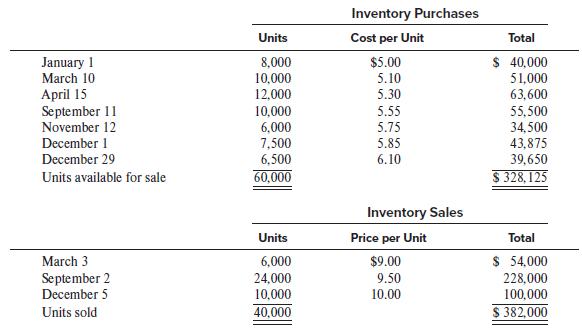Bravo Wholesalers, Inc., began its business on January 1, 20X1. Information on its inventory purchases and sales
Question:
Bravo Wholesalers, Inc., began its business on January 1, 20X1. Information on its inventory purchases and sales during 20X1 follows:

Required:
1. Compute the cost of ending inventory and cost of goods sold under each of the following methods: (a) FIFO, (b) weighted average cost, and (c) LIFO. Assume that Bravo uses the periodic inventory method.
2. Assume that Bravo uses the periodic LIFO method.
a. Calculate the replacement cost of the ending inventory and the LIFO reserve as of yearend. You may assume that year-end purchase cost was still $6.10 per unit.
b. Estimate Bravo’s cost of goods sold under the periodic FIFO method based only on the information that will be publicly available to Bravo’s investors. Explain why your answer differs from FIFO cost of goods sold computed in requirement 1.
c. Bravo’s purchasing manager was planning to acquire 10,000 units of inventory on January 5, 20X2, at $6.10 per unit. Its accountant suggests that the company will be better off if it acquires the inventory instead on December 31, 20X1. What are the pros and cons of the accountant’s suggestion? Wherever possible, show supporting calculations.
3. Calculate the cost of goods sold assuming that Bravo uses (a) the perpetual FIFO method; (b) the perpetual weighted average method.
Step by Step Answer:

Financial Reporting And Analysis
ISBN: 9781260247848
8th Edition
Authors: Lawrence Revsine, Daniel Collins, Bruce Johnson, Fred Mittelstaedt, Leonard Soffer





